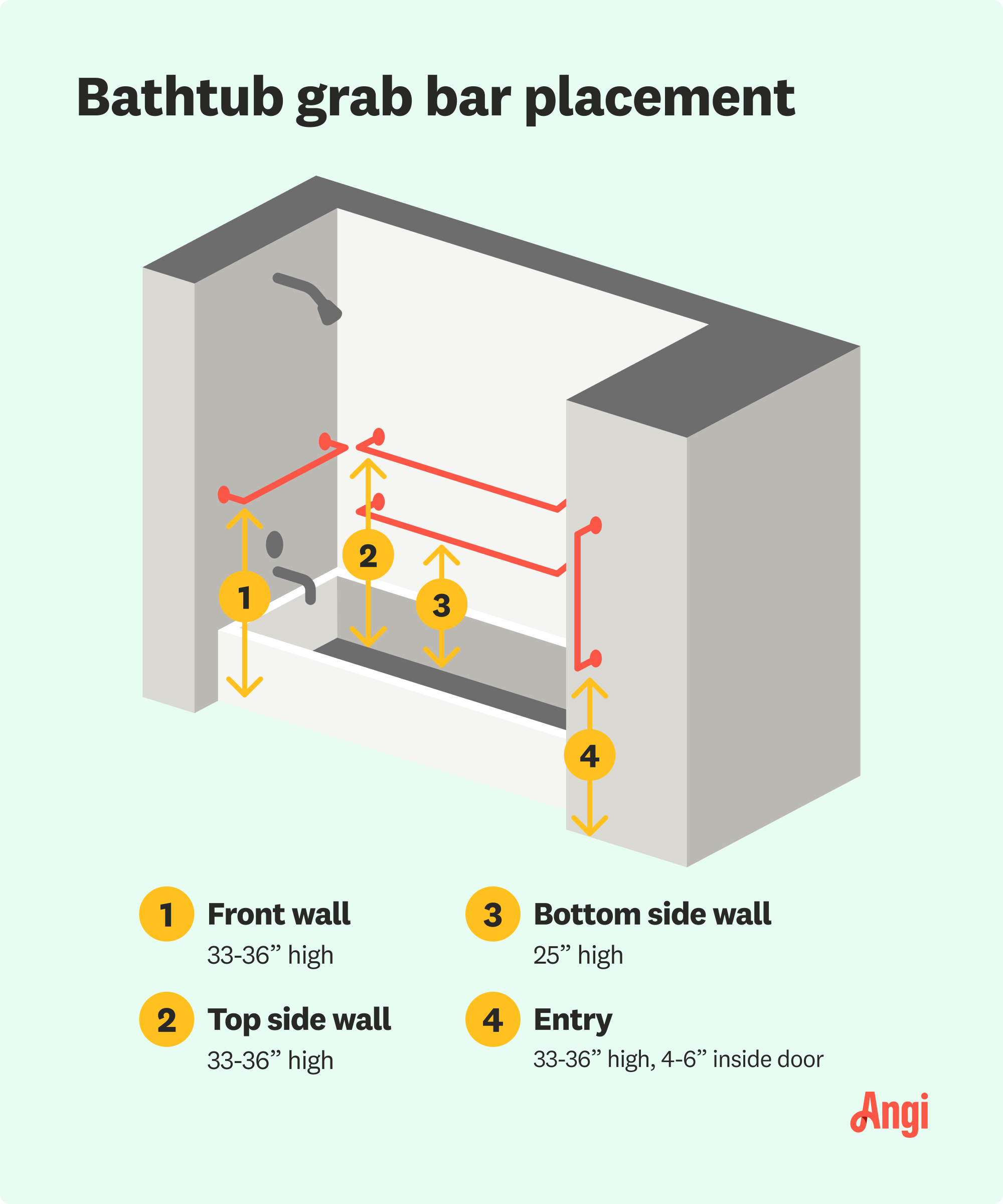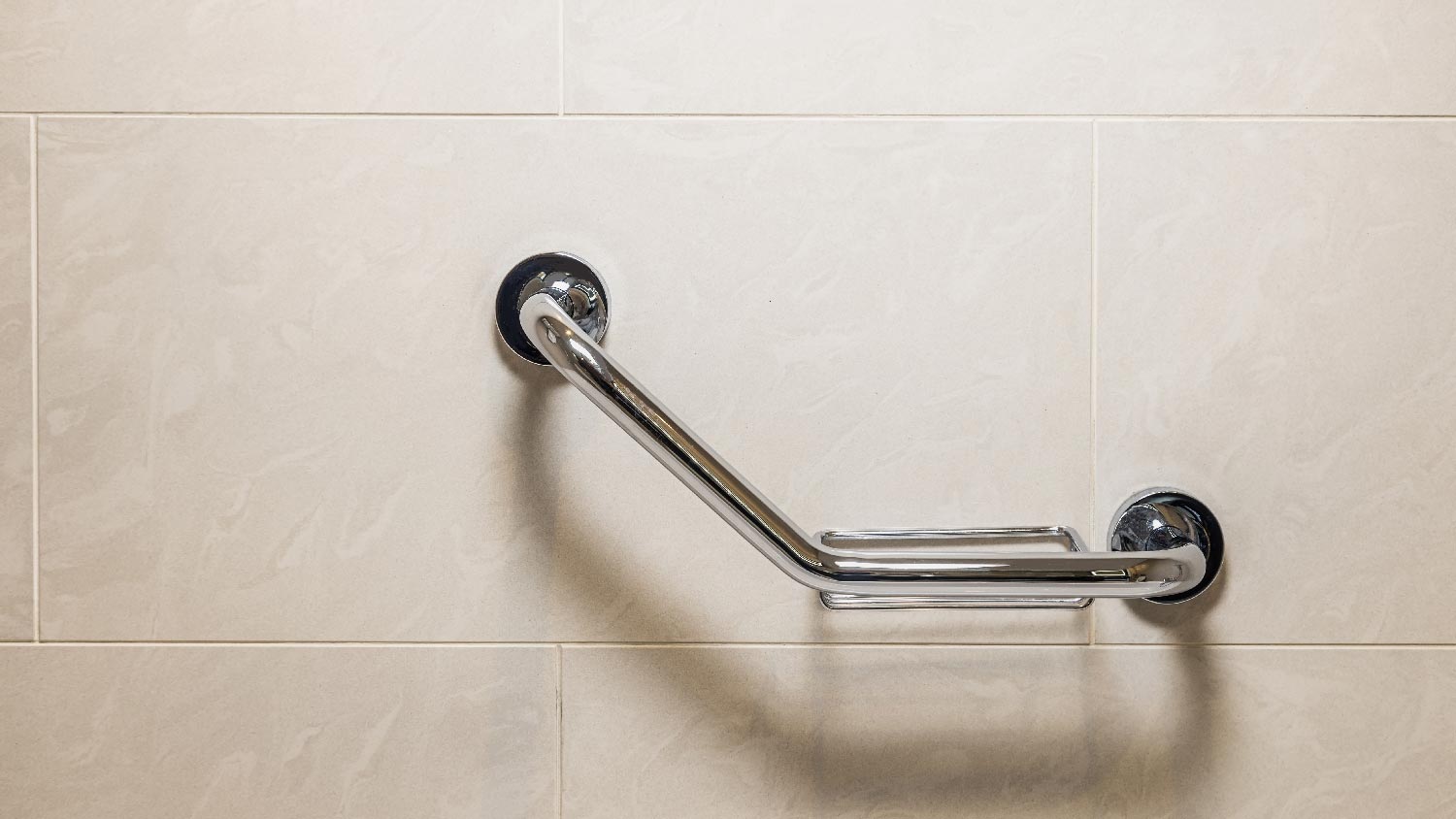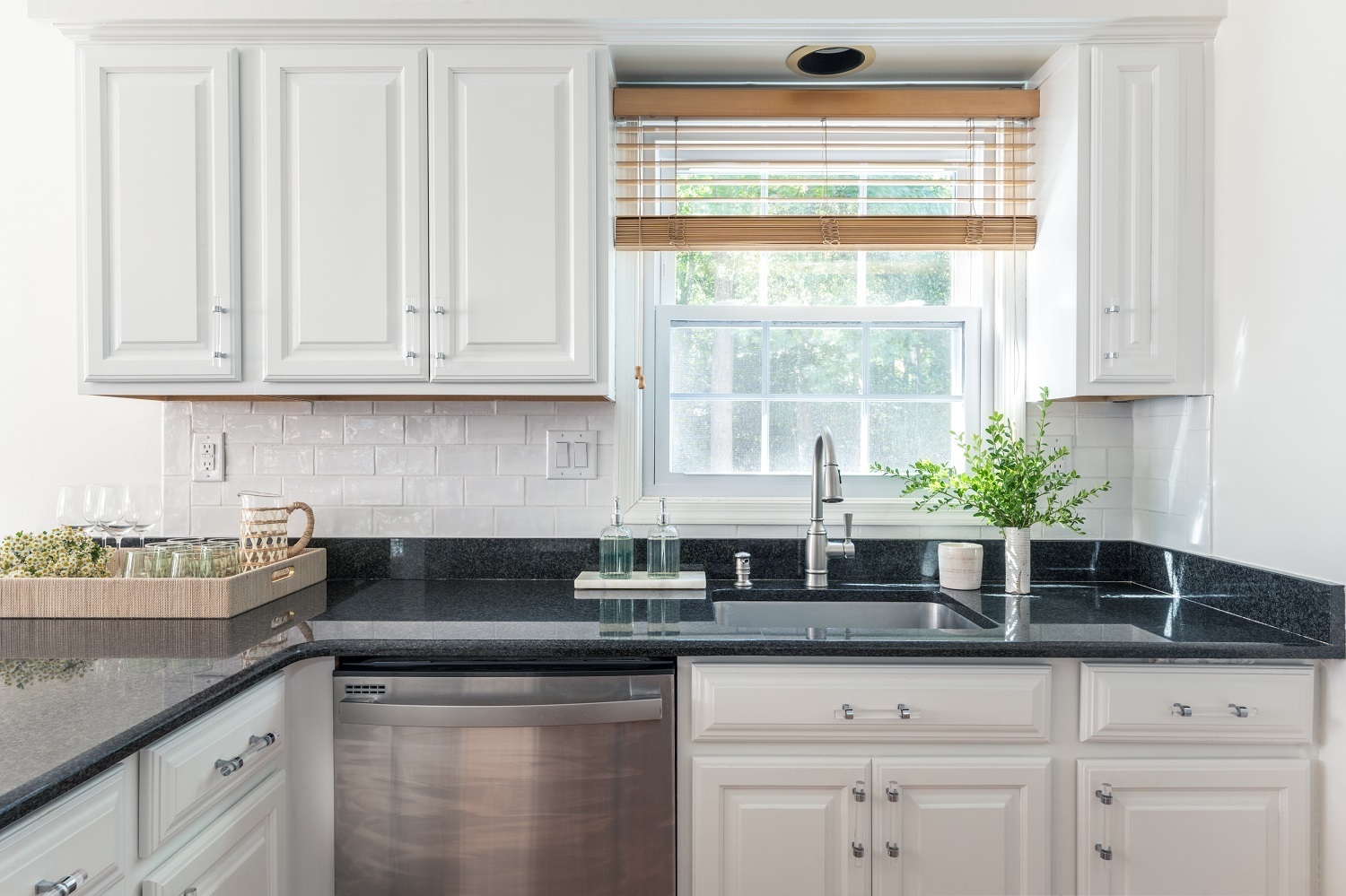Tub Grab Bar Placement: A Homeowner’s Guide
Get a grip on shower and tub handrail placement


Tub grab bar placement matters for safety and proper use.
Install handrails inside the shower entrance, along the sides, and at the front.
Grab bar installation is budget-friendly whether you DIY or hire a pro.
Always follow installation directions for the safest use.
You can buy safety bars that match your bathroom decor and finishes.
Tub grab bar placement plays an important role in home safety and accessibility. Bathtub handrails and safety bars protect people of all ages and abilities when navigating the bathroom, giving them something to hold onto and keeping them steady when getting into and out of bathtubs and while standing or seated. We look at why placement matters, where to install your bathtub handrails, costs, and installation tips.
Why Does Proper Grab Bar Placement Matter?
Most accidents in the home happen in the bathroom due to wet and slippery surfaces. While you can’t prevent every slip or fall, grab bars help, and placement matters. Most falls happen when getting into or out of the tub or shower, so placing accessible bathroom fixtures in easy-to-reach locations near the entrance and inside the surround can prevent slips and injuries.
Grab bars and other accessible bathroom ideas make bathrooms safer for individuals of all ages and abilities. A bathroom remodeler near you can help you pick out the ideal grab bars for your shower or bathtub and install them at the right height.
Universal design aims to make bathrooms functional and safe for all in the home. Features include grab bars, a comfort height toilet, slip-resistant flooring, a shower seat, a walk-in tub, a curbless shower, and making the bathroom wheelchair accessible.
Where to Install Bathtub Grab Bars
Grab bars are only helpful if they’re within reach when you need them. Fortunately, the Americans With Disabilities Act (ADA) and sources for universal design have guidelines and best practices for grab bar placement. Here are some of the most popular types of shower grab bars and where and how to install shower grab bars:

Entry Grab Bar
Install entry grab bars vertically, at 4 to 6 inches inside the bathtub or shower entryway. These handrails give an added boost to people getting into and out of the tub or shower. Choose one 24 to 26 inches long, and install it at a natural height for grabbing. The ideal shower grab bar placement is 33 to 36 inches from the floor for most adults.
Top Side Wall Grab Bar
Add a second grab bar higher on the side wall—the longest wall or back wall of the shower—to give bathers more security and safety while standing in the shower. Choose one that is 12 to 24 inches long or matches the length of the bottom side wall handrail and mount it 33 to 36 inches from the floor.
Bottom Side Wall Grab Bar
Install bottom side wall grab bars low on the longest or back wall of the shower. These assist people standing or sitting in the bathtub. Mount these horizontally at 25 inches above the tub or shower floor. You can choose a shorter safety bar to match other grab bars or select a longer handrail measuring 36 or 48 inches.
Front Wall Grab Bar
Bathtub safety bars on the front wall of the bathtub, where the showerhead and faucet are mounted, help bathers stay sturdy while standing or moving around in the shower or tub. They can also assist people who need help sitting or standing in the bath. Select a grab bar 24 to 36 inches long that matches your shower wall length or the length of the other grab bars, and mount it 33 to 36 inches from the floor.
If you have children, or if the adults in your home are taller or shorter than average, you can be flexible with the length of grab bars, the height at which you install them, and where in the bath you install them to fit your family's needs.
How Much Does Grab Bar Installation Cost?

Grab bar installation costs depend on location, the type of shower safety handrails you’ve chosen, the type of shower or bathtub surround, installation complexity, and whether you hire a pro or do the job yourself.
Average stainless steel grab bars cost $20 to $50, but specialty grab bars and designer finishes or materials cost more. Professional grab bar installation costs between $80 and $600, according to HomeAdvisor. That said, installation may be more cost-effective if you have your contractor install more than one bar at a time or if you add handrails during shower construction.
DIY vs. Hiring a Pro
You can DIY it, but since the project aims to increase bathroom safety, be sure you can do the job correctly. Otherwise, your best option is to hire an accessible bathroom contractor to install shower safety bars in a way that will protect your tub and the people who use it.
Tips for Installing Bathroom Grab Bars
You need your shower handrails to withstand years of use, so installing them right is essential. Here are some installation tips for bathtub safety bars:
Most grab bars come with installation directions. Follow all guidelines for installation, placement, length, and location.
Always attach grab bars to wall studs with the correct mounting hardware.
Think about placement before you install. Walk through likely scenarios, think about the height and abilities of users, and consider how you’ll grip the bars. You may find the optimal placement for your household differs from general recommendations.
Choose grab bars that complement your bathroom style and finishes for a higher-end look.
For added safety, select safety bars with textured surfaces for a better grip.





- Bathroom Remodeling
- Kitchen Remodeling
- Shower Installation
- Stair Installers
- Bathtub Installation
- Shower Door Installers
- Kitchen Design
- Bathroom Design Companies
- Storm Shelter Builders
- Pre-Made Cabinets
- Kitchen Refacing
- Bathtub Replacement
- Ceiling Tile Installation
- Suspended Ceiling Companies
- Residential Designers
- Stair Builders
- Remodel Designers
- Shower Enclosures
- Home Renovations
- Kitchen Renovations
- Garage Remodeling
- Grab Bar Installation
- Walk-In Tub Installers
- Tub to Shower Conversion
- Balcony Contractors
- Toilet Grab Bar Height Requirements: A Homeowner’s Guide for Safety and Convenience
- How to Design an Accessible Bathroom for Older Adults
- 8 Ways to Prevent Falls in the Shower
- 6 Tips for Converting Your Bathtub Into a Shower
- Shower vs. Bathtub: Which Is Right for Your Bathroom?
- How to Convert a Tub to a Walk-In Shower
- The Best Bathroom Accessories That Everyone Needs
- Tub-to-Shower Conversion Ideas to Inspire Your Bathroom Renovation
- How to Install a Shower Using Direct-to-Stud Kits
- How to Remove a Shower Light Cover Safely and Easily











